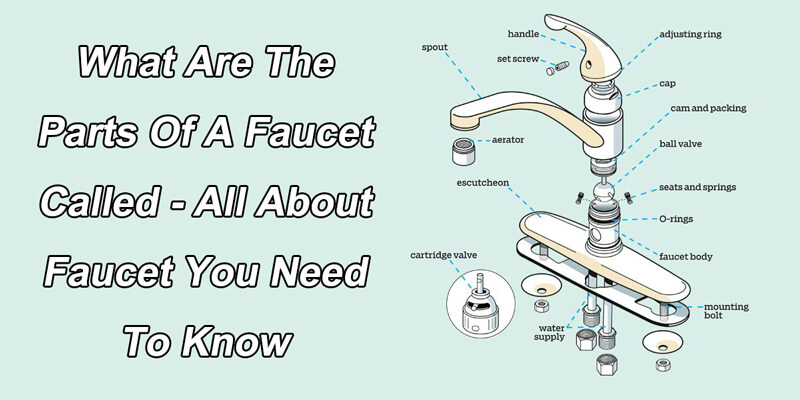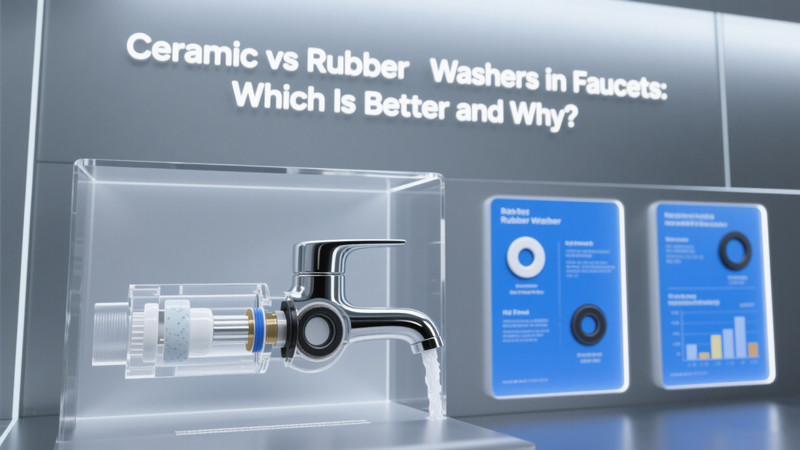
Faucets are an essential fixture found in homes, offices, and public spaces alike. We use them every day for various purposes, such as washing hands, dishes, or filling up containers. Despite their ubiquity, most of us rarely think about the intricate components that make up a faucet and allow it to function efficiently. In this article, we will explore what are the parts of a faucet called and delve into their functions, shedding light on this seemingly simple yet crucial plumbing device.
What Are The Parts Of A Faucet Called
1. Spout: The spout is the visible part of the faucet from which water flows out. It is the primary outlet and comes in various shapes and lengths, depending on the type of faucet. Some faucets have a fixed spout, while others feature a swivel spout for added convenience, allowing users to direct the water flow.
2. Handle(s): Faucets come with one or more handles that are used to control the water flow and temperature. In single-handle faucets, a lever or knob allows users to adjust both hot and cold water by moving it left or right. On the other hand, double-handle faucets have separate handles for hot and cold water, allowing for precise temperature control.
3. Cartridge/Valve: The cartridge or valve is the heart of the faucet, responsible for regulating the water flow and controlling the temperature. In single-handle faucets, it is usually a ceramic disc cartridge, while in double-handle faucets, there are two separate cartridges—one for hot and one for cold water. The quality of the cartridge affects the durability and smooth operation of the faucet.
4. Aerator: The aerator is a small mesh screen that fits onto the end of the faucet’s spout. Its primary function is to mix air with the water flow, creating a steady, splash-free stream. Moreover, it conserves water by reducing flow rates while maintaining adequate pressure.
5. O-rings and Washers: O-rings and washers serve as crucial components in preventing leaks. O-rings are round rubber rings that seal the faucet’s handle and spout connections, while washers create a watertight seal between different parts of the faucet.
6. Supply Lines: Supply lines are the pipes that connect the faucet to the water supply. They are usually made of flexible materials such as stainless steel or braided polymer, allowing for easy installation and providing some flexibility to accommodate various setups.
7. Escutcheon Plate: The escutcheon plate is a decorative or protective plate that covers the holes in the sink or countertop where the faucet is installed. It adds a polished look to the faucet and prevents water from seeping into the counter space.
8. Mounting Nut: The mounting nut secures the faucet to the sink or countertop. It is usually located underneath the sink and requires tightening to keep the faucet in place.
9. Body/Shank: The body or shank is the main structure of the faucet, connecting the handles and spout. It houses the cartridge and other internal components and provides stability to the entire faucet assembly.
10. Inlet Hoses: Inlet hoses connect the supply lines to the faucet’s body, allowing water to flow into the cartridge and then out of the spout. These hoses are crucial for the proper functioning of the faucet.
11. Pop-up Drain Assembly (for bathroom sink faucets): In bathroom sink faucets, a pop-up drain assembly is used to control the sink’s drain stopper. When you pull the faucet’s lift rod, the pop-up assembly allows water to flow down the drain, and when you push it back down, the drain closes.
12. Handle Screw: The handle screw is a small but essential component that connects the handle to the faucet’s cartridge or valve. It ensures the handle can control the flow and temperature of water effectively.
Conclusion
Understanding the different parts of a faucet can be beneficial for troubleshooting and performing basic maintenance. If you ever encounter a leak or malfunction, having this knowledge might enable you to identify the problematic component and potentially fix it yourself.
In conclusion, a faucet may seem like a straightforward device, but it comprises several crucial parts that work harmoniously to provide us with the water we need for daily tasks. From the spout to the cartridge, each component plays a vital role in delivering a smooth and reliable water flow. So, the next time you turn on a faucet, take a moment to appreciate the engineering marvel behind this everyday convenience.
 WOWOW Faucets
WOWOW Faucets



